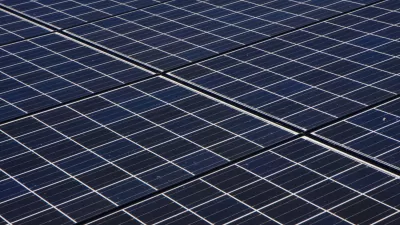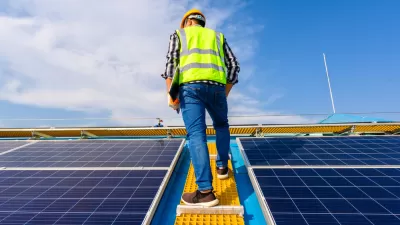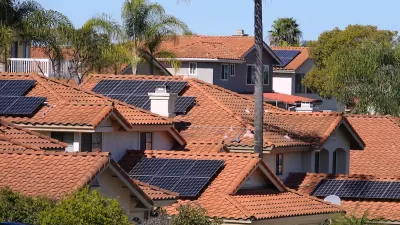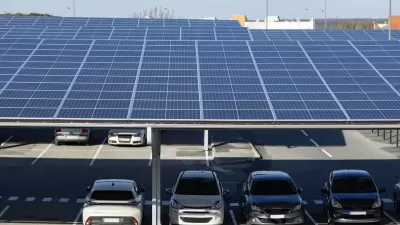Across the country, community solar is taking off and making the financial and environmental benefits of solar energy more accessible.

Patrick Sisson reports that New York City is seeing a crop of new community solar projects providing cheaper energy to more people. He describes how the Altus Bronx Community Solar Farm works:
Power generation is centralized on the rooftop of this self-storage company, which gets paid for hosting the panels. But 150 New Yorkers who subscribe to the program benefit from the power generated here—all without upfront costs or equipment installation—and see a 5 to 10 percent discount on their electricity bills.
Residents, particularly renters, and small business owners can take advantage of lower energy costs, and the programs offer building owners an additional income stream. Cities, notes Sisson, are good locations for community solar because they have lots of rooftops and many potential customers.
State legislation in 2015 brought community solar to New York, but recent state regulatory changes have made the process much less onerous. The projects are more feasible now that larger installations are allowed, small businesses can become subscribers, and developers have more incentives to put in solar infrastructure.
"In addition, combined with the state’s push to develop energy storage capacity, new community solar can provide an economic benefit by leveraging private capital, creating jobs, and lowering rates, according to David Sandbank, Director of Distributed Energy Resources at [the New York State Energy Research and Development Authority], all while creating a smarter, more resilient grid," writes Sisson.
FULL STORY: Community solar may be the solution to help New York go green

Study: Maui’s Plan to Convert Vacation Rentals to Long-Term Housing Could Cause Nearly $1 Billion Economic Loss
The plan would reduce visitor accommodation by 25,% resulting in 1,900 jobs lost.

North Texas Transit Leaders Tout Benefits of TOD for Growing Region
At a summit focused on transit-oriented development, policymakers discussed how North Texas’ expanded light rail system can serve as a tool for economic growth.

Why Should We Subsidize Public Transportation?
Many public transit agencies face financial stress due to rising costs, declining fare revenue, and declining subsidies. Transit advocates must provide a strong business case for increasing public transit funding.

How Community Science Connects People, Parks, and Biodiversity
Community science engages people of all backgrounds in documenting local biodiversity, strengthening connections to nature, and contributing to global efforts like the City Nature Challenge to build a more inclusive and resilient future.

Alabama: Trump Terminates Settlements for Black Communities Harmed By Raw Sewage
Trump deemed the landmark civil rights agreement “illegal DEI and environmental justice policy.”

Dear Tesla Driver: “It’s not You, It’s Him.”
Amidst a booming bumper sticker industry, one writer offers solace to those asking, “Does this car make me look fascist?”
Urban Design for Planners 1: Software Tools
This six-course series explores essential urban design concepts using open source software and equips planners with the tools they need to participate fully in the urban design process.
Planning for Universal Design
Learn the tools for implementing Universal Design in planning regulations.
City of Santa Clarita
Ascent Environmental
Institute for Housing and Urban Development Studies (IHS)
City of Grandview
Harvard GSD Executive Education
Toledo-Lucas County Plan Commissions
Salt Lake City
NYU Wagner Graduate School of Public Service





























